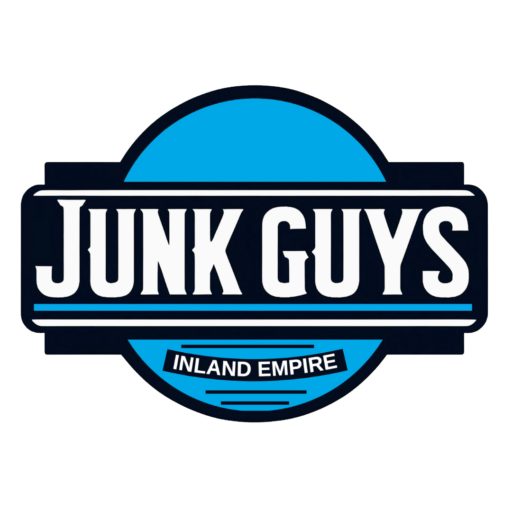Scrap hauling is an essential service within the recycling and waste management industry that involves the collection, transportation, and sometimes processing of scrap materials. Whether you’re running a small local operation or managing a larger fleet, efficient scrap hauling can significantly elevate your profits by reducing costs and improving turnaround times. In this article, we’ll explore top tips that can help you streamline your scrap hauling activities while maximizing revenue.
Understanding the Importance of Efficient Scrap Hauling
Efficient scrap hauling is more than just moving scrap from point A to point B. It encompasses strategic planning, route optimization, safe handling, and effective communication with customers and scrap yards. Why is this so important? Because efficiency directly impacts your operational costs and customer satisfaction—two critical components to maximizing profits.
By focusing on optimization, you can reduce fuel consumption, minimize vehicle wear and tear, and increase the volume of scrap transported per trip. This ultimately translates into more trips, happier clients, and higher earnings.
Top Tips for Efficient Scrap Hauling
1. Plan and Optimize Your Routes
Route planning is a fundamental aspect of efficient scrap hauling. Using GPS tracking and advanced route optimization software can help you design the most time- and fuel-efficient routes. By avoiding congestion and minimizing idle time, you save on fuel expenses and ensure timely pick-ups and deliveries.
2. Invest in the Right Equipment
Having the proper equipment tailored to the types of scrap you haul can dramatically improve efficiency. For example, flatbed trucks can handle bulky items, while roll-off containers ease large quantities. The better suited your vehicles are to the cargo, the faster and safer your operations will be.
3. Maintain Your Fleet Regularly
Regular maintenance minimizes breakdowns and costly downtime. Well-maintained vehicles consume fuel more efficiently, operate more safely, and last longer. Schedule routine inspections and address issues promptly to avoid unexpected repairs.
4. Train Your Team on Best Practices
Your drivers and loaders are on the front lines. Training them on efficient loading techniques, safety protocols, and time management can increase productivity and reduce accidents. Encourage communication among your team for smooth coordination.
5. Consolidate Loads When Possible
Maximizing the load on each trip reduces the number of journeys, saving both time and fuel. Plan your pickup schedule to group loads geographically. However, always ensure you do not exceed legal or safety weight limits.

6. Stay Updated on Market Prices and Regulations
Scrap prices fluctuate based on market demand and commodity trends. Keeping abreast of these changes allows you to schedule hauls when prices are favorable. Simultaneously, staying compliant with environmental and transportation regulations prevents fines or shutdowns.
7. Utilize Technology for Tracking and Analytics
Technology such as telematics, GPS tracking, and fleet management software provides real-time data on vehicle locations, driver behavior, and fuel usage. Analyzing this information can pinpoint inefficiencies and areas for improvement, helping you make data-driven decisions.
8. Build Strong Relationships with Scrap Yards and Clients
Good communication streamlines handoffs and fosters trust. Establishing strong relationships with scrap yards can sometimes lead to priority service or better pricing, and working closely with clients ensures scheduling aligns with their needs.
Benefits of Implementing Efficient Scrap Hauling Practices
- Reduced Operational Costs: Less fuel consumption, fewer vehicle repairs, and decreased labor costs.
- Increased Revenue: More trips with fully loaded trucks result in higher earnings.
- Improved Customer Satisfaction: Timely and reliable service strengthens client retention.
- Enhanced Safety: Proper equipment and trained staff lower the risk of accidents.
- Environmental Impact: Reduced fuel usage and optimized routes contribute to a smaller carbon footprint.
Example: How Route Optimization Boosts Efficiency
A local scrap hauling company in California integrated GPS-based route optimization software into their operations. Within three months, they reported a 20% reduction in fuel costs and increased the number of daily pickups by 15%. This translates not only to financial gains but also to decreased vehicle wear over time. According to the U.S. Department of Energy, route optimization in freight transport can reduce fuel consumption by 10–20%, directly benefiting the bottom line (source).
Scrap Hauling FAQ
Q1: What is the best way to start a scrap hauling business efficiently?
A1: Begin with route planning and investing in adaptable vehicles suited to your target scrap material. Focus on building relationships with scrap yards and clients to streamline operations.
Q2: How can technology improve scrap hauling efficiency?
A2: Using GPS tracking, telematics, and fleet management software helps optimize routes, monitor fuel consumption, and improve driver safety and productivity.
Q3: How do weight limits affect scrap hauling efficiency?
A3: It’s crucial to comply with legal weight limits for safety and regulatory reasons. Efficient load consolidation should maximize cargo capacity without exceeding these limits to avoid fines and maintain safety.
Conclusion: Take Charge of Your Scrap Hauling Efficiency Today
Maximizing profits in scrap hauling isn’t just about working harder—it’s about working smarter. By implementing these top tips, including route optimization, investing in proper equipment, regular fleet maintenance, and leveraging technology, you can significantly enhance the efficiency and profitability of your scrap hauling business. Staying informed and proactive ensures you stay ahead in this competitive industry.
Ready to boost your scrap hauling operation to the next level? Start adopting these efficient practices today and watch your profits grow while contributing positively to the environment through sustainable recycling efforts.
Junk Guys Inland Empire
Phone: 909-253-0968
Website: www.junkguysie.com
Email: junkguysie@gmail.com
